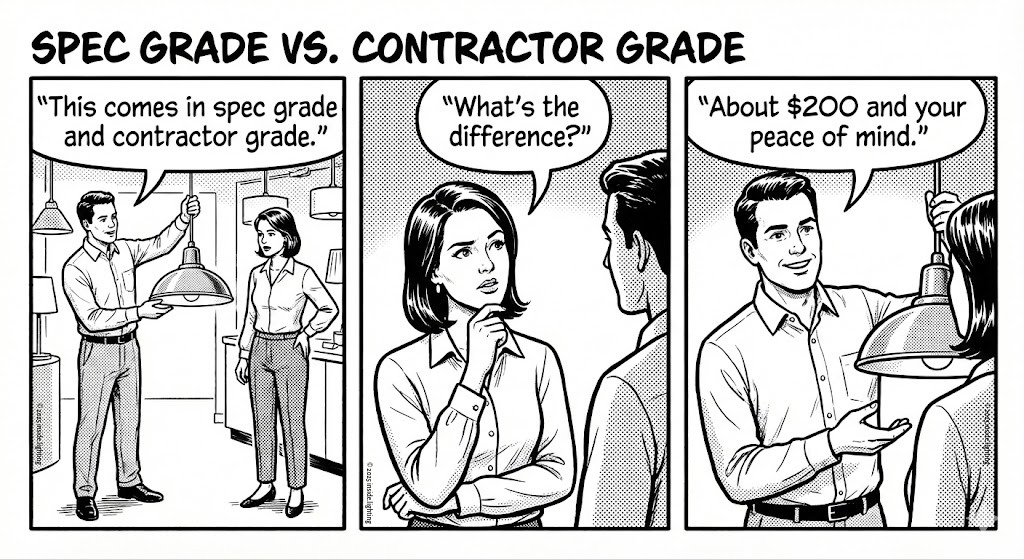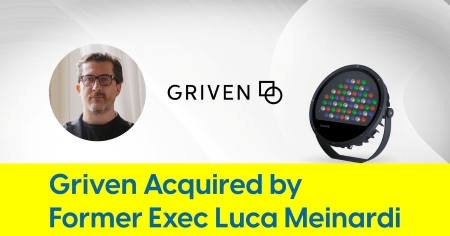April 25, 2025
Signify Posts Weakest Quarterly Revenue Since 2020

Sales fall to €1.45 billion ($1.64 billion) amid segment pressure and transition
As CEO Eric Rondolat concludes his 13-year run leading Philips Lighting and Signify, the company posted its lowest quarterly revenue since the early days of the pandemic — a symbolic turning point for a business navigating both a changing marketplace and a CEO leadership transition.
First-quarter 2025 revenue landed at €1.448 billion ($1.636 billion), the lowest since Q1 2020 when COVID-19 disruptions were just beginning and newly acquired Cooper Lighting had just over four weeks of sales under Signify’s roof. Back then, the shock came from a world in lockdown. Today, the pressures are more complex — and possibly more internal.
A Seasonal Low with Structural Implications
It’s true that Q1 is traditionally a slower quarter, and Signify executives were quick to cite that context. But a closer look shows that seasonality alone doesn’t explain the declines. Comparable sales growth slipped 2.8%, and adjusted EBITA margin shrank to 8.0%, down from 8.3% in the same quarter last year.
Notably, these margin pressures arrived despite a leaner organization. The company reduced its workforce by roughly 5%, from 31,339 full-time employees to 29,697, part of a broader restructuring effort implemented last year. Yet lower headcount didn’t translate into stronger profitability. The anticipated operational lift didn’t materialize, as softer volumes and a shifting mix in business segments muted the savings.
OEM Pain: Customer Concentration, Price Erosion
The most acute trouble appeared in the OEM segment. Sales dropped 10.2% to €92 million ($104 million), and comparable growth fell 10.7%. EBITA plummeted nearly 57% year over year. According to Signify, the impact was driven in part by the exit of "two large customers" and heightened price competition in its components business. Rondolat also noted that the pressure from the loss of these two customers is expected to persist in the coming quarters.
The impact raises concerns not just about a bad quarter, but about structural long-term exposure — namely, increased China tariffs and the vulnerability of OEM revenues to a handful of major clients and a market increasingly driven by cost over differentiation.
During this morning's earnings call, Rondolat described the 4.2% margin in Signify’s OEM business as an outlier, projecting a return to high single-digit territory. In a notably confident statement, he asserted, “we are probably 2 to 3 times more profitable than other competitors.”
Tariffs & Price Increases
Rondolat outlined a series of tactical moves to navigate rising U.S.-China trade tensions, including halting all China imports to the U.S., building inventory for Q2, and shifting China-dependent production to other parts of Asia. His comments came weeks after the company announced a joint venture with India’s Dixon Technologies, a deal that expands manufacturing flexibility even as it’s framed as a domestic market play.
Beyond sourcing, Rondolat detailed measured U.S. price increases and stressed the importance of pricing discipline amid competitive pressures. He emphasized that Signify’s strategy is not about overhauls or stockpiling, but about maintaining flexibility to adapt to whatever challenges emerge — a pragmatic, calculated response to an increasingly volatile trade landscape.
Professional Sector’s Subtle Shift
While the OEM dip was dramatic, the Professional segment (a.k.a. Commercial & Industrial) revealed a quieter but no less consequential trend: a gradual drift from its historic role as the company’s flagship. Revenue held nearly flat at €942 million ($1.064 billion), a nominal decline of 0.1%, but comparable sales slipped 1.8%.
Europe — long a high-margin region for Signify — continued to underperform, especially in trade and public sector channels. Growth in agricultural lighting offered a bright spot, but it wasn’t enough to offset broader softness. EBITA margin in the segment dropped from 7.4% to 7.1%, as the high-margin mix deteriorated and indirect cost savings failed to fully balance the drag.
Earnings Per Share (EPS) Rises, But Not for Operational Reasons
Amid the top-line and margin challenges, Signify reported a notable jump in basic earnings per share: €0.53 ($0.60), up from €0.35 ($0.40) a year earlier. But the rise wasn’t driven by stronger business performance. Instead, it was fueled by reduced restructuring costs, lighter financial expenses, and a slimmer share count thanks to ongoing buybacks.
Signify disclosed share repurchases for both remuneration and capital reduction purposes — actions that support EPS mechanically, even if underlying earnings growth is more modest. The company didn’t explicitly draw the line between the buybacks and the EPS rise, but the connection is hard to miss.
A Leadership Transition at a Crucial Moment
Today marks Eric Rondolat’s final day as CEO. During his tenure, he steered the company through a transformative period — from the Philips Lighting spinoff to a digital and sustainability-focused portfolio. While this latest quarter wasn’t a flattering final chapter, it’s part of a broader story still unfolding.
CFO Željko Kosanović will serve as interim CEO while the Supervisory Board evaluates and finalizes the company's permanent leadership direction. The succession process, and what it signals for Signify’s next phase, is highlighted in a separate article to be published today.
Looking Ahead
Signify reaffirmed its full-year guidance, noting continued strength in connected and specialty lighting, which now account for more than one-third of its revenue. The company expects sales momentum to build across the year and anticipates stable adjusted EBITA margins compared to 2024.
But this quarter delivered a clear message: stability won’t come from cost-cutting alone. With customer shifts, margin pressures, and a key business segment in flux, Signify enters this leadership transition facing not just a seasonal dip — but a broader inflection point.











